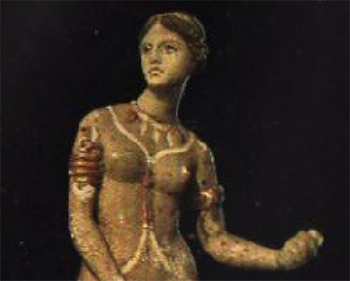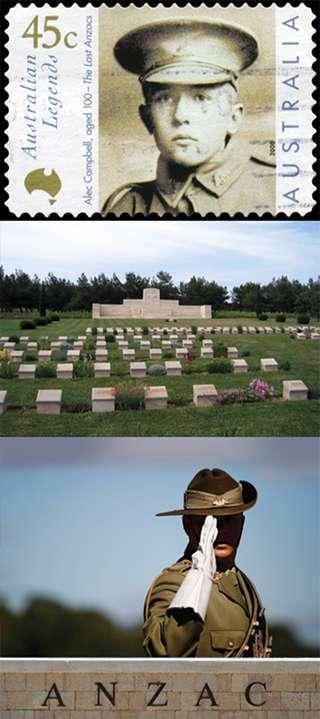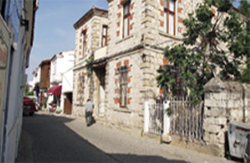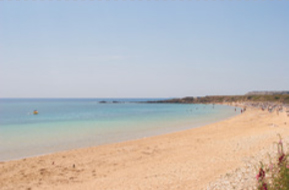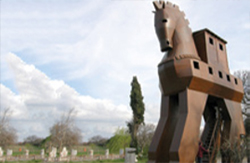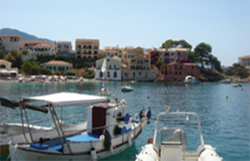|
The first city on the site of Troy was Wilusa, founded in the 3rd millenium BC by the Hittites, who were the first indigenous Anatolian people to rise to form a state during the Bronze Age. Situated over the Hisarlık Hill on the northwestern tip of Troad Peninsula, it was clear that the reason for the city’s existence in the first place was a total control of Dardanelles, which, along with the Sea of Marmara and the Bosphorus, is today known as the Turkish Straits, a key route connecting Mediterranean with the Black Sea, as well as being where European and Asian landmasses are almost just a stone’s throw away from each other. The abduction of Helen, the daughter of the king of Sparta, by Paris, a Trojan prince, sparked enmity between the Trojans and Achaeans from across the Aegean Sea. Having been unable to break into the defensive walls of the city, Achaeans decided to set up a trick—they offered a huge wooden horse as a gift to Trojans, as an amend for the bother they caused with their war galleys on the city’s beach. Trojans accepted the offer sincerely, but this resulted in them losing their city, as inside of the horse was full of Achaean soldiers, ready to combat, and now right in the center of the city. For all its actuality, there was a Trojan War, which possibly took place in the 12th century BC, and it was around this time Hittite Wilusa was converted to Hellenic Illion, and later Troia. However, for some reason, all later invaders from all directions, with the notable exception of Alexander the Great (who founded the city of Alexandria Troas on the coast south of Troy), favoured Bosphorus to northeast instead of Dardanelles for their intercontinental crossings. The Roman emperor Constantine I (r. 306-337) agreed as well, founding a new capital for his empire, Constantinople (Istanbul today), on the banks of Bosphorus. As Constantinople flourished, its geographical rival Troy declined, eventually disappearing under layers of dirt.
|
Since the days of Byzantine Empire, Troy was thought to be nothing but Homer’s pure imagination, but in 1868, Heinrich Schliemann, a German businessman and a self-proclaimed archaeologist, proved otherwise, after taking the hint that Troy might be a real place buried under the Hisarlık Hill from Frank Calvert, a British archaeologist who visited the site three years earlier. As Schliemann’s excavations were totally amateurish, it damaged the integrity of much of the remains,
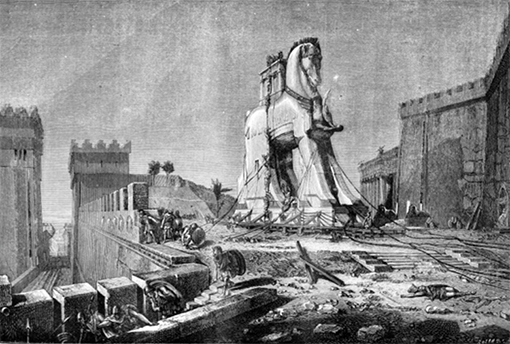
but Schliemann obtained what he yearned for anyway—his Greek spouse Sophia Schliemann is immortalized in a photo showing her wearing the treasures found at the Hisarlık Hill (part of the treasure was later taken by the Red Army from Berlin to Moscow at the end of World War II). Although almost a century and a half passed since the days of Schliemann, Troy still hasn’t been unearthed completely yet, and the excavation works still continue to this day. Once a harbour city on the edge of a deep bay of Dardanelles, the site now lies 5 km inland from the coast due to the alluvial material carried by the River Scamander (modern Karamenderes), which filled the bay, turning it into the fertile, flat farmland stretching out to the sea that it is.
|
 Geneose and Ottomans. The story of Bozcaada starts with the arrival of Tenes, the son of King
Kyknos, to the Leukophrys island, which is renamed as Tenedos (Tenes’s Island). Pelasginas are
thought to be the first inhabitants of the island approximately 5000 years ago. Beginning from
the ancient times the strategic location of the island, which is located at the mouth of Dardanelles,
played a critical role in order to control firsty Troia (Troy) and than the Dardanelles. More recently
the island was used as an air base by the Allied forces in the Gallipoli Campaign of First World
War (WW I). Bozcaada castle is the first historical structure, which
attracts your attention when you step the island. The castle have a very deep history dated
back to Phoenicians time with cut stones. Later on, it was restored by the Genoese and the
Venetians. After the Ottoman takeover, Fatih Sultan Mehmet ordered the reconstruction of
the Bozcaada Fort as it is remained today. This was performed by Gedik Ahmet Pasha. Some
of the other historical structures that are worth to visit are Koprulu Mehmed Pasha Mosque,
which was built in the 17th century, and the active church that was remained from Venetians.
While you are walking on the streets, old Greek and Ottoman architectural structures can be
seen in all narrow streets of the lovely island.
Geneose and Ottomans. The story of Bozcaada starts with the arrival of Tenes, the son of King
Kyknos, to the Leukophrys island, which is renamed as Tenedos (Tenes’s Island). Pelasginas are
thought to be the first inhabitants of the island approximately 5000 years ago. Beginning from
the ancient times the strategic location of the island, which is located at the mouth of Dardanelles,
played a critical role in order to control firsty Troia (Troy) and than the Dardanelles. More recently
the island was used as an air base by the Allied forces in the Gallipoli Campaign of First World
War (WW I). Bozcaada castle is the first historical structure, which
attracts your attention when you step the island. The castle have a very deep history dated
back to Phoenicians time with cut stones. Later on, it was restored by the Genoese and the
Venetians. After the Ottoman takeover, Fatih Sultan Mehmet ordered the reconstruction of
the Bozcaada Fort as it is remained today. This was performed by Gedik Ahmet Pasha. Some
of the other historical structures that are worth to visit are Koprulu Mehmed Pasha Mosque,
which was built in the 17th century, and the active church that was remained from Venetians.
While you are walking on the streets, old Greek and Ottoman architectural structures can be
seen in all narrow streets of the lovely island.
 Geneose and Ottomans. The story of Bozcaada starts with the arrival of Tenes, the son of King
Kyknos, to the Leukophrys island, which is renamed as Tenedos (Tenes’s Island). Pelasginas are
thought to be the first inhabitants of the island approximately 5000 years ago. Beginning from
the ancient times the strategic location of the island, which is located at the mouth of Dardanelles,
played a critical role in order to control firsty Troia (Troy) and than the Dardanelles. More recently
the island was used as an air base by the Allied forces in the Gallipoli Campaign of First World
War (WW I). Bozcaada castle is the first historical structure, which
attracts your attention when you step the island. The castle have a very deep history dated
back to Phoenicians time with cut stones. Later on, it was restored by the Genoese and the
Venetians. After the Ottoman takeover, Fatih Sultan Mehmet ordered the reconstruction of
the Bozcaada Fort as it is remained today. This was performed by Gedik Ahmet Pasha. Some
of the other historical structures that are worth to visit are Koprulu Mehmed Pasha Mosque,
which was built in the 17th century, and the active church that was remained from Venetians.
While you are walking on the streets, old Greek and Ottoman architectural structures can be
seen in all narrow streets of the lovely island.
Geneose and Ottomans. The story of Bozcaada starts with the arrival of Tenes, the son of King
Kyknos, to the Leukophrys island, which is renamed as Tenedos (Tenes’s Island). Pelasginas are
thought to be the first inhabitants of the island approximately 5000 years ago. Beginning from
the ancient times the strategic location of the island, which is located at the mouth of Dardanelles,
played a critical role in order to control firsty Troia (Troy) and than the Dardanelles. More recently
the island was used as an air base by the Allied forces in the Gallipoli Campaign of First World
War (WW I). Bozcaada castle is the first historical structure, which
attracts your attention when you step the island. The castle have a very deep history dated
back to Phoenicians time with cut stones. Later on, it was restored by the Genoese and the
Venetians. After the Ottoman takeover, Fatih Sultan Mehmet ordered the reconstruction of
the Bozcaada Fort as it is remained today. This was performed by Gedik Ahmet Pasha. Some
of the other historical structures that are worth to visit are Koprulu Mehmed Pasha Mosque,
which was built in the 17th century, and the active church that was remained from Venetians.
While you are walking on the streets, old Greek and Ottoman architectural structures can be
seen in all narrow streets of the lovely island.

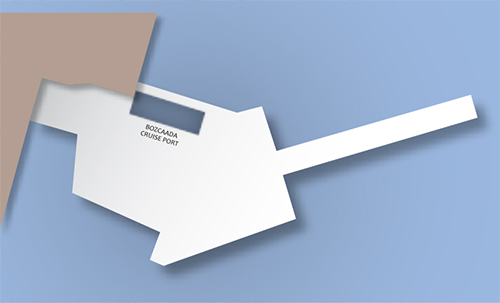


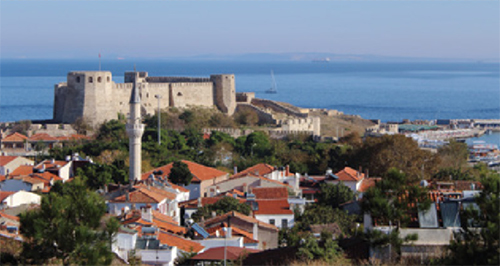

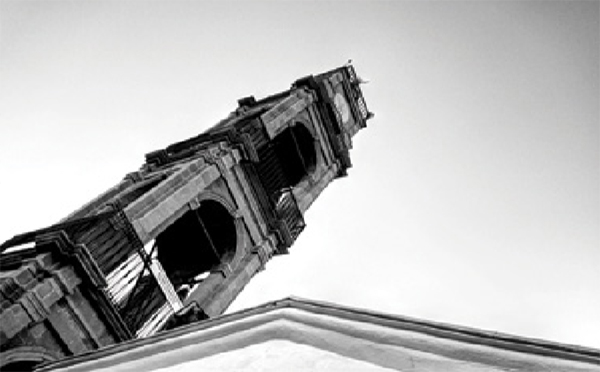
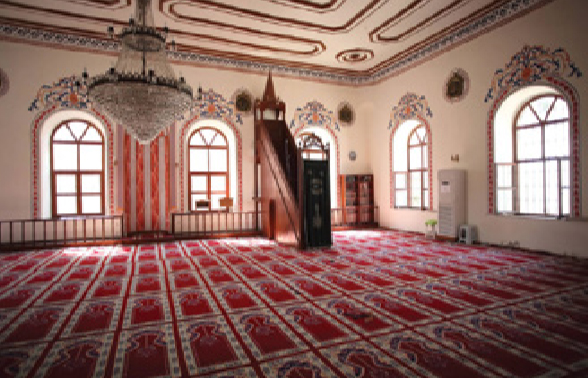
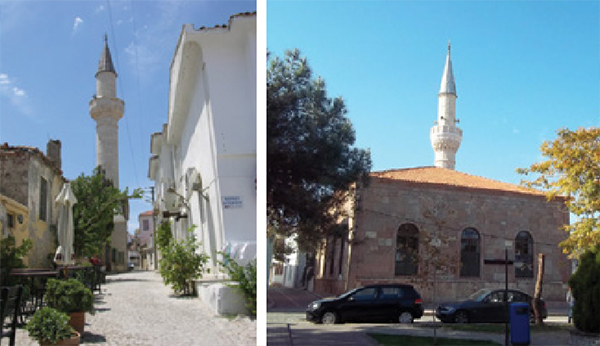
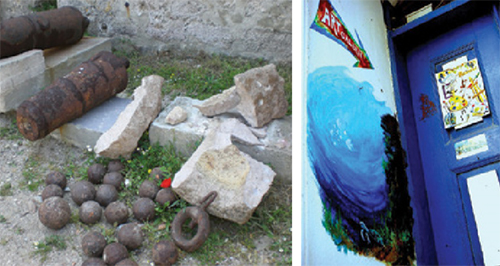


 but Schliemann obtained what he yearned for anyway—his Greek spouse Sophia Schliemann is immortalized in a photo showing her wearing the treasures found at the Hisarlık Hill (part of the treasure was later taken by the Red Army from Berlin to Moscow at the end of World War II). Although almost a century and a half passed since the days of Schliemann, Troy still hasn’t been unearthed completely yet, and the excavation works still continue to this day. Once a harbour city on the edge of a deep bay of Dardanelles, the site now lies 5 km inland from the coast due to the alluvial material carried by the River Scamander (modern Karamenderes), which filled the bay, turning it into the fertile, flat farmland stretching out to the sea that it is.
but Schliemann obtained what he yearned for anyway—his Greek spouse Sophia Schliemann is immortalized in a photo showing her wearing the treasures found at the Hisarlık Hill (part of the treasure was later taken by the Red Army from Berlin to Moscow at the end of World War II). Although almost a century and a half passed since the days of Schliemann, Troy still hasn’t been unearthed completely yet, and the excavation works still continue to this day. Once a harbour city on the edge of a deep bay of Dardanelles, the site now lies 5 km inland from the coast due to the alluvial material carried by the River Scamander (modern Karamenderes), which filled the bay, turning it into the fertile, flat farmland stretching out to the sea that it is.
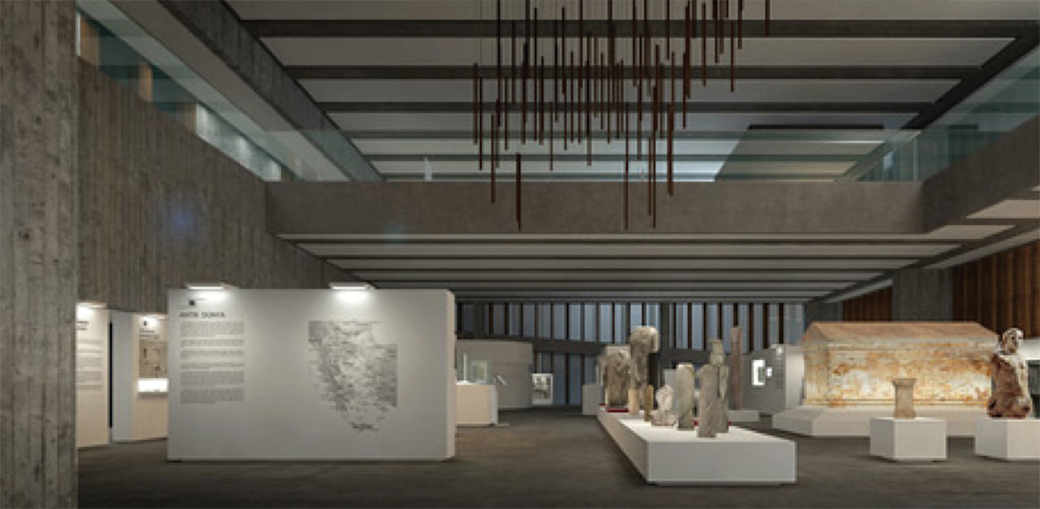

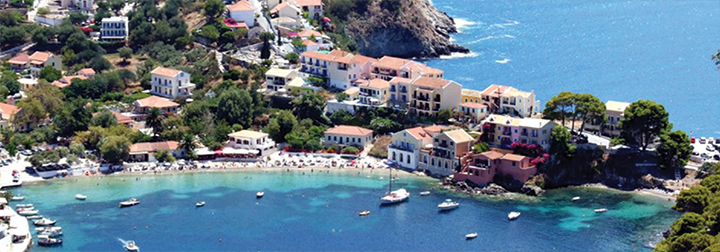

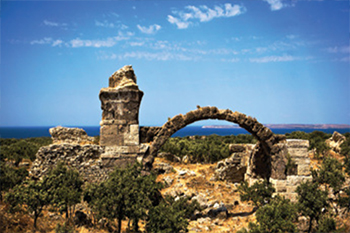 It was one of the major sea ports in the Aegean connecting trade routes in Asia Minor to Neapolis in Macedonia by sea lines and then to Rome by road. The city was founded in 310 BC and its original name was Antigonia Troas, named by Antigonus, but then it was changed into Alexandria Troas by Lysimachus and dedicated to Alexander the Great. During the Roman period, especially under the reign of Cesar and then Augustus, the city lived its heydays thanks to its busy port. Alexandria Troas is an important site for the history of Christianity, it was mentioned several times in the Bible. In the 1st century AD Saint Paul passed some time in Troas during his second missionary journey where he had a vision of a man calling him to Macedonia to help them (Acts 16. 9), so he sailed to Europe (Acts, 16:8 - 11) where he first preached. Also, in Troas Luke joined Paul and they continued their mission. On his third missionary journey Saint Paul had a long preach during which Eutychus fell down from the third floor of the building (Acts 20:6 - 10). There are other biblical references to Troas in 2 Cor 2:12 and 2 Tim 4:13. Alexandria Troas remains a titular see of the Roman Catholic Church. When you enter the ancient site today you can clearly see traces of the city walls which were fortified with towers, some sections are well preserved. One of the major entrances to the city was the Eastern gate, known as Neandria gate, which was built in the 3rd century BC. It has a circular atrium (20 meters in diameter) with towers on both sides. There are remains of a bath and a gymnasium. The aqueduct was built by emperor Trajan. The harbour is fully silted today. On the highest point of the site you can see the Hellenistic theater, which offered spectators a great view of the city.
It was one of the major sea ports in the Aegean connecting trade routes in Asia Minor to Neapolis in Macedonia by sea lines and then to Rome by road. The city was founded in 310 BC and its original name was Antigonia Troas, named by Antigonus, but then it was changed into Alexandria Troas by Lysimachus and dedicated to Alexander the Great. During the Roman period, especially under the reign of Cesar and then Augustus, the city lived its heydays thanks to its busy port. Alexandria Troas is an important site for the history of Christianity, it was mentioned several times in the Bible. In the 1st century AD Saint Paul passed some time in Troas during his second missionary journey where he had a vision of a man calling him to Macedonia to help them (Acts 16. 9), so he sailed to Europe (Acts, 16:8 - 11) where he first preached. Also, in Troas Luke joined Paul and they continued their mission. On his third missionary journey Saint Paul had a long preach during which Eutychus fell down from the third floor of the building (Acts 20:6 - 10). There are other biblical references to Troas in 2 Cor 2:12 and 2 Tim 4:13. Alexandria Troas remains a titular see of the Roman Catholic Church. When you enter the ancient site today you can clearly see traces of the city walls which were fortified with towers, some sections are well preserved. One of the major entrances to the city was the Eastern gate, known as Neandria gate, which was built in the 3rd century BC. It has a circular atrium (20 meters in diameter) with towers on both sides. There are remains of a bath and a gymnasium. The aqueduct was built by emperor Trajan. The harbour is fully silted today. On the highest point of the site you can see the Hellenistic theater, which offered spectators a great view of the city.
